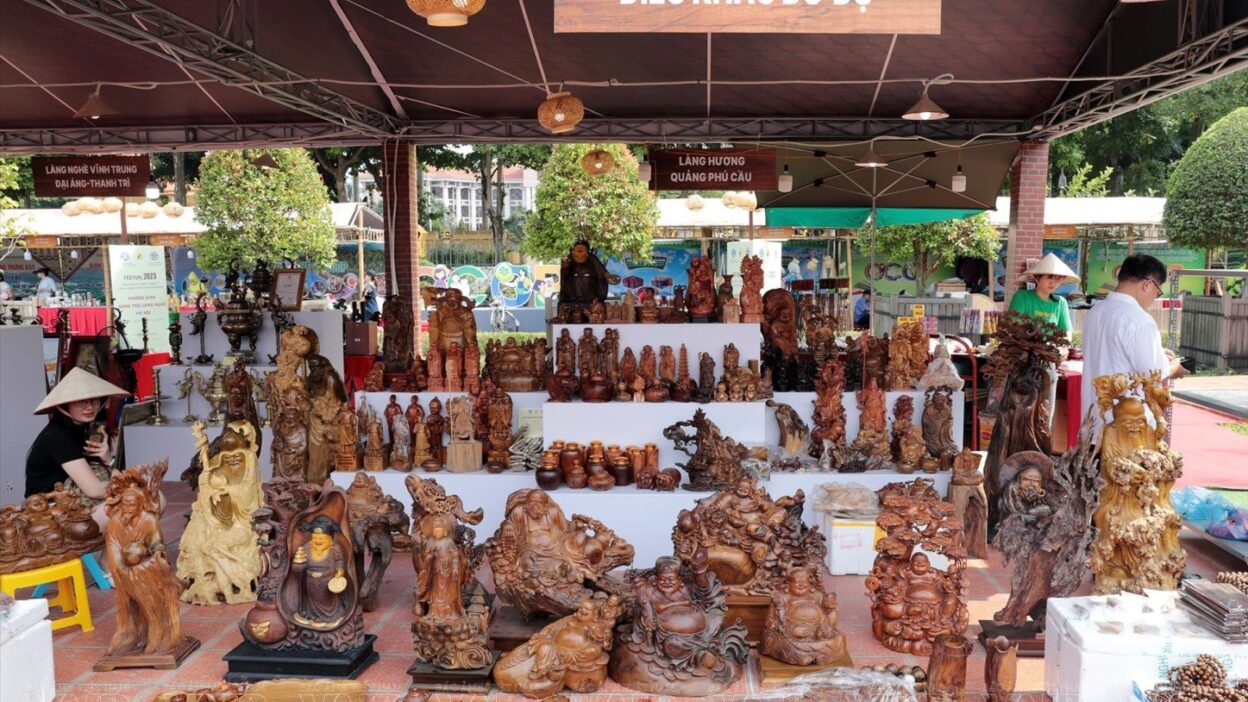Vietnam is a country steeped in centuries of cultural richness, where heritage doesn’t sit in museums—it breathes in the daily life of its people. Across its regions, from northern mountains to southern deltas, Vietnam traditional crafts have been nurtured and passed down through generations as a vital part of community identity, local economy, and national pride.
More than just beautiful products, these crafts are living legacies, each with its own story, symbolism, and soul. For foreign travelers seeking authentic cultural experiences, discovering Vietnam’s traditional crafts opens a gateway to deeper understanding and more meaningful connections.
In this guide, we’ll explore:
- Why traditional crafts are essential to Vietnam’s culture
- The most iconic Vietnamese craft villages
- What to see, do, and buy
- How travelers can engage responsibly and support local artisans
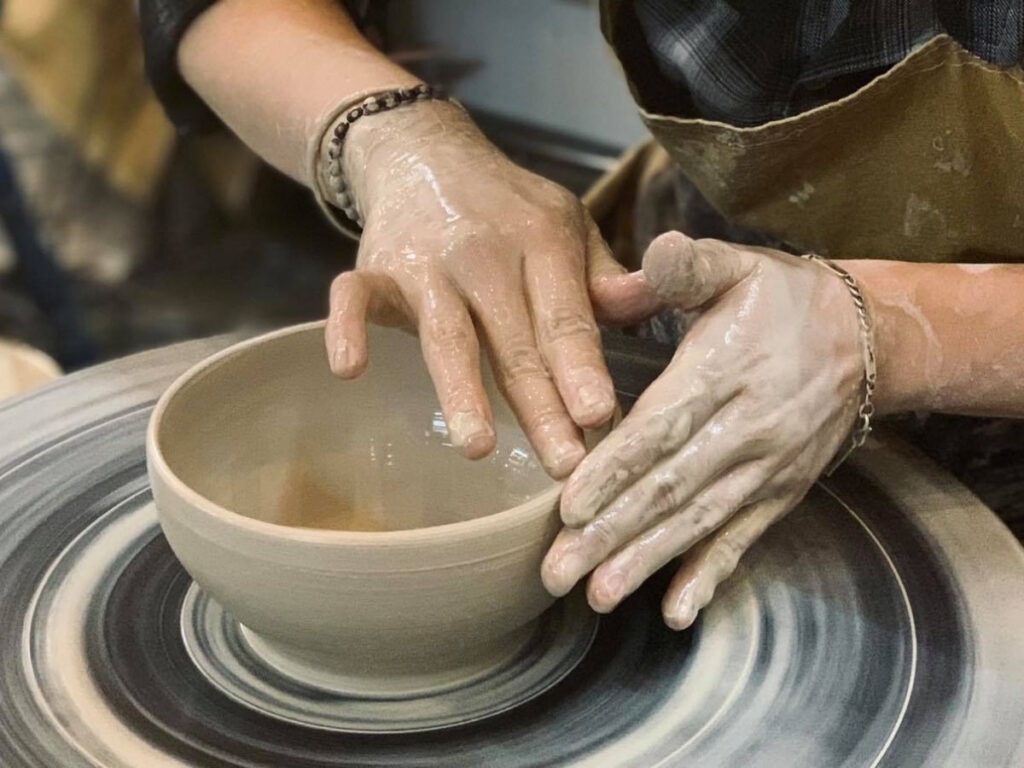
1. The Cultural Significance of Vietnam Traditional Crafts
A Legacy Carved by Hand
Vietnam’s traditional crafts reflect more than skill—they carry the spirit of resilience, harmony with nature, and community values. Dating back hundreds, even thousands of years, these crafts evolved alongside dynasties, trade routes, and spiritual beliefs.
They are tangible expressions of Vietnamese identity: every ceramic pot, silk scarf, wood carving, and bamboo basket tells a story not just of artistry, but of the environment, religion, and lifestyle that shaped it.
Preserving Heritage, Sustaining Communities
In many rural regions, craft villages play a vital role in:
- Creating sustainable livelihoods
- Preserving intangible heritage (rituals, techniques, stories)
- Promoting intergenerational knowledge transfer
- Empowering women and ethnic minorities
By supporting Vietnam traditional crafts, travelers are not just buying souvenirs—they’re helping to sustain living culture.
2. Top 12 Vietnam Traditional Craft Villages You Must Visit
1. Bát Tràng Pottery Village (Hanoi)
- Craft: Ceramics and porcelain
- History: Over 500 years old
- What to do:
- Join hands-on pottery workshops
- Visit ancient kilns and ceramic markets
- Purchase teapots, vases, and hand-painted items
Bát Tràng is one of Vietnam’s most famous ceramic villages, located along the Red River. Its clay products are both practical and artistic, often featuring traditional motifs and natural glazes.
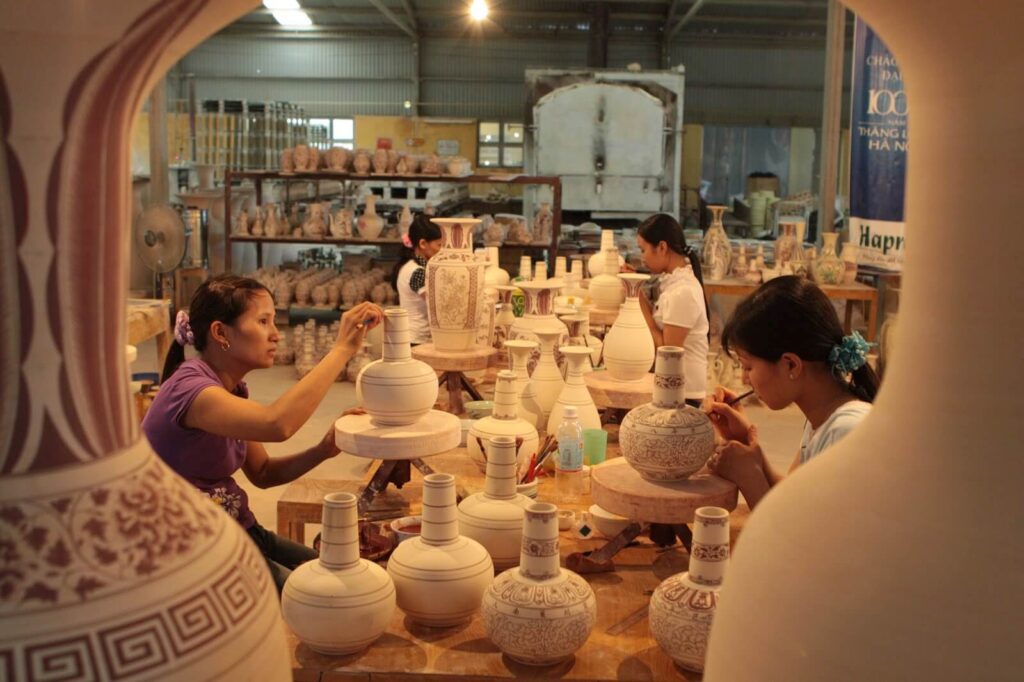
2. Đông Hồ Folk Painting Village (Bac Ninh)
- Craft: Woodblock folk painting
- History: Over 400 years
- Highlights:
- See how artists use natural materials like dó paper and vegetable-based dyes
- Discover traditional themes: countryside life, mythical creatures, moral lessons
- Buy meaningful, handmade artwork
This village preserves a unique visual language that is fading fast elsewhere in the world.
3. Vạn Phúc Silk Village (Hanoi)
- Craft: Silk weaving
- Known for: Soft, glossy silk with diverse patterns
- Experience:
- Watch weavers operate wooden looms
- Learn about silk dyeing and pattern creation
- Shop for scarves, áo dài (traditional dresses), and fabric by the meter
Located in Hà Đông district, Vạn Phúc is Vietnam’s best-known silk village, with roots in imperial weaving.
4. Quảng Phú Cầu Incense Village (Hanoi)
- Craft: Incense stick making
- Why visit:
- Iconic photo ops with fields of bright red incense bundles
- Witness the process from bamboo splitting to scent infusion
- Learn about incense in Vietnamese religious rituals
This village not only offers sensory appeal but also a deep look into the spiritual fabric of Vietnam.
5. Bàu Trúc Pottery Village (Ninh Thuận)
- Craft: Hand-built pottery by Chăm ethnic minority
- Unique trait: Made without a wheel—by hand and open firing
- Cultural connection:
- Designs reflect Hinduism, nature, and tribal stories
- Earthy tones and organic textures
This is one of the oldest pottery traditions in Southeast Asia.
6. Thanh Hà Pottery Village (Hội An)
- Craft: Terra cotta pottery
- What to explore:
- Visit the Terracotta Park
- Try shaping clay using traditional methods
- Discover ancient trade routes that made Thanh Hà a royal supplier
Combine your Hội An trip with a stop here for both culture and creativity.
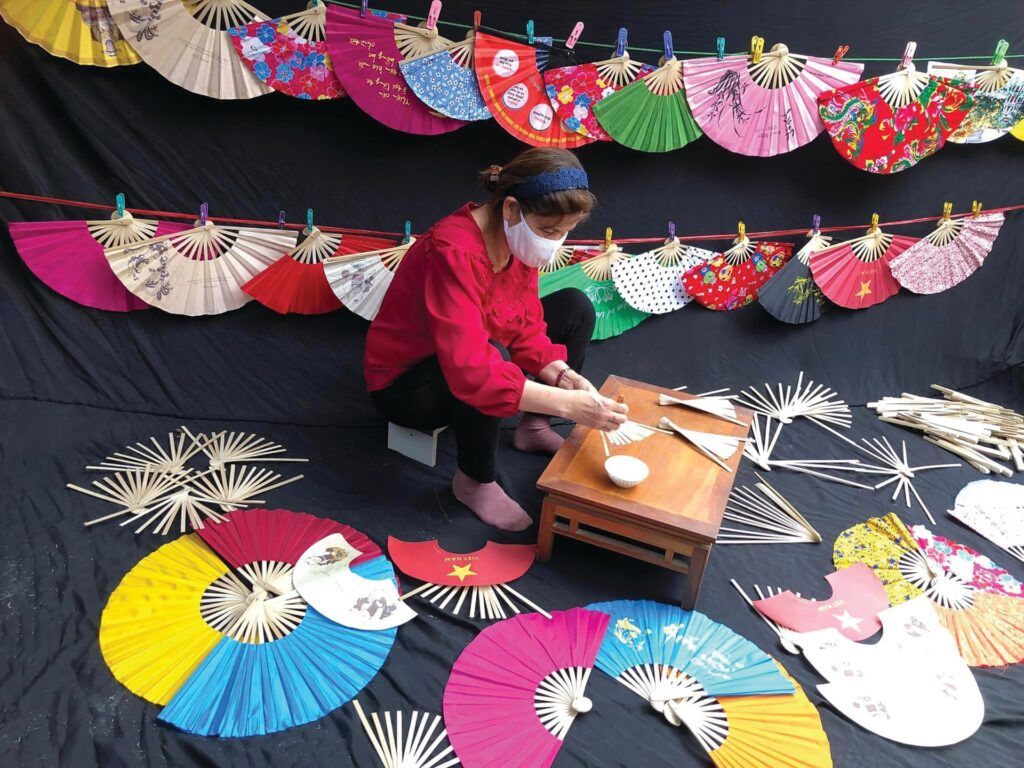
7. Kim Bồng Carpentry Village (Hội An)
- Craft: Wood carving and shipbuilding
- Known for:
- Elegant carvings used in temples and traditional houses
- Boat-making for generations
Meet craftsmen who contributed to historic Vietnamese architecture and continue to train new artisans.
8. Tây Hồ Conical Hat Village (Huế)
- Craft: Nón lá (conical hats), including the poetic nón bài thơ
- Must do:
- Watch artisans stitch poems and drawings into hat layers
- Learn how they select palm leaves and dry them
- Bring home a symbolic and useful souvenir
The conical hat is an icon of Vietnam, and here it becomes an art form.
9. Châu Giang Brocade Weaving (An Giang)
- Craft: Handwoven brocade by the Chăm people
- Features:
- Intricate geometric patterns
- Colorful threads
- Cultural significance in ceremonies and daily life
Meet weavers and try operating a loom yourself.
10. Tân Châu Silk Village (An Giang)
- Craft: Lãnh Mỹ A—luxurious black silk
- Special dyeing process: Uses fruit of the mặc nưa tree
- Legacy:
- Associated with nobility and elegance
- Nearly lost before being revived by local masters
Lãnh Mỹ A is often compared to high-end Japanese or Indian silk.
11. Lái Thiêu Pottery Village (Bình Dương)
- Craft: Household ceramics and decorative pottery
- Popular items: Water jars, planters, incense burners
- Why it matters:
- Mixes practicality with artistic flair
- Known throughout southern Vietnam
12. Định Yên Mat Weaving Village (Đồng Tháp)
- Craft: Handwoven reed mats
- Colorful patterns: Reds, yellows, and greens in dynamic designs
- Special trait: Known for night weaving sessions lit by oil lamps
These mats are both practical and beautiful, often used in rural homes and temples.
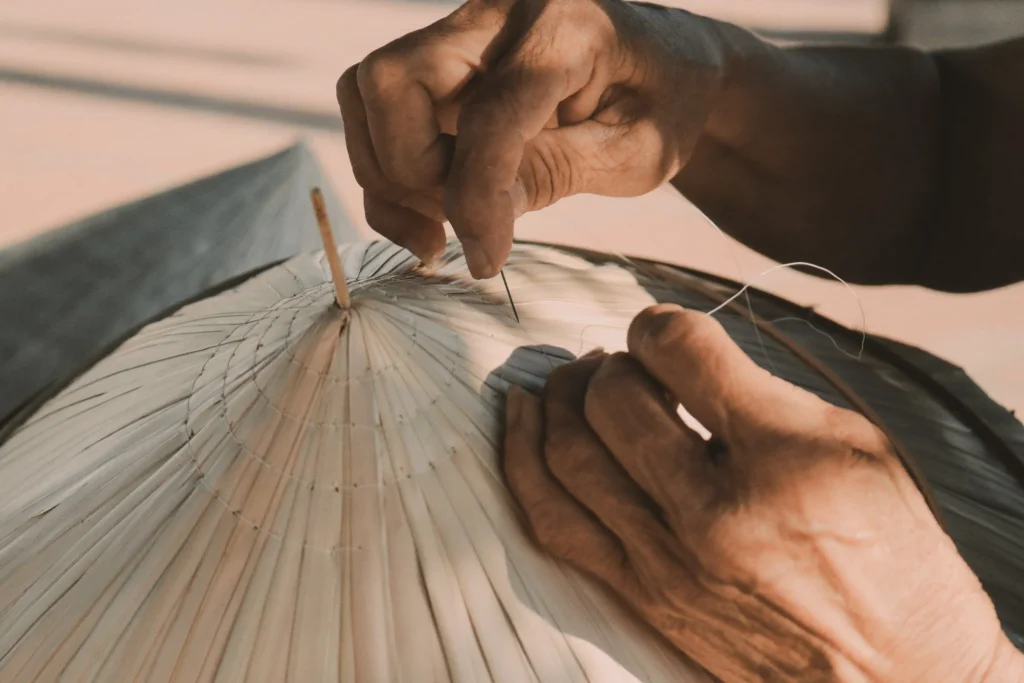
3. When and How to Explore Vietnam Traditional Crafts
Best Time to Visit
Vietnam’s craft villages are open year-round, but the best times include:
- Spring (Feb–Apr): Ideal for cultural festivals
- Autumn (Sep–Nov): Pleasant weather and harvest season
- Lunar New Year (Tet): Special activities, workshops, and festive decorations
How to Plan Your Visit
- Join cultural tours: Many travel agencies offer half-day or full-day village tours
- Use local guides: They offer language support and cultural interpretation
- Participate in workshops: Create your own souvenir and understand the craft deeply
4. Responsible Travel Tips for Engaging With Traditional Crafts
- Buy direct from artisans: Support their income and build personal connection
- Avoid bargaining too aggressively: Crafting takes time and effort
- Ask before taking photos: Respect privacy and cultural boundaries
- Choose eco-friendly products: Many crafts use sustainable materials
- Share your story: Promote craft villages on social media and blogs to raise awareness

5. What to Bring Home: Best Vietnam Traditional Craft Souvenirs
| Craft Product | Best Location | Why It’s Special |
| Ceramic mugs/vases | Bát Tràng, Thanh Hà | Hand-painted, each one unique |
| Silk scarves | Vạn Phúc, Tân Châu | Luxurious feel, cultural symbolism |
| Wood carvings | Kim Bồng, Đồng Kỵ | Intricate, meaningful for home decor |
| Incense bundles | Quảng Phú Cầu | Aromatic, cultural and spiritual |
| Conical hats | Huế (Tây Hồ) | Lightweight, handmade, poetic |
| Brocade accessories | Châu Giang | Ethnic design, vibrant colors |
| Folk paintings | Đông Hồ | Artistic, historically significant |
6. Vietnam Traditional Crafts and Sustainable Tourism
Exploring Vietnam traditional crafts contributes to sustainable tourism by:
- Reducing over-tourism: Diverting travelers from crowded cities to rural areas
- Preserving cultural identity: Keeping traditions alive
- Empowering artisans: Especially women, ethnic minorities, and rural youth
- Encouraging slow travel: Deeper engagement, less environmental impact
More importantly, it fosters cultural empathy. You’re not just buying a product—you’re learning a way of life.
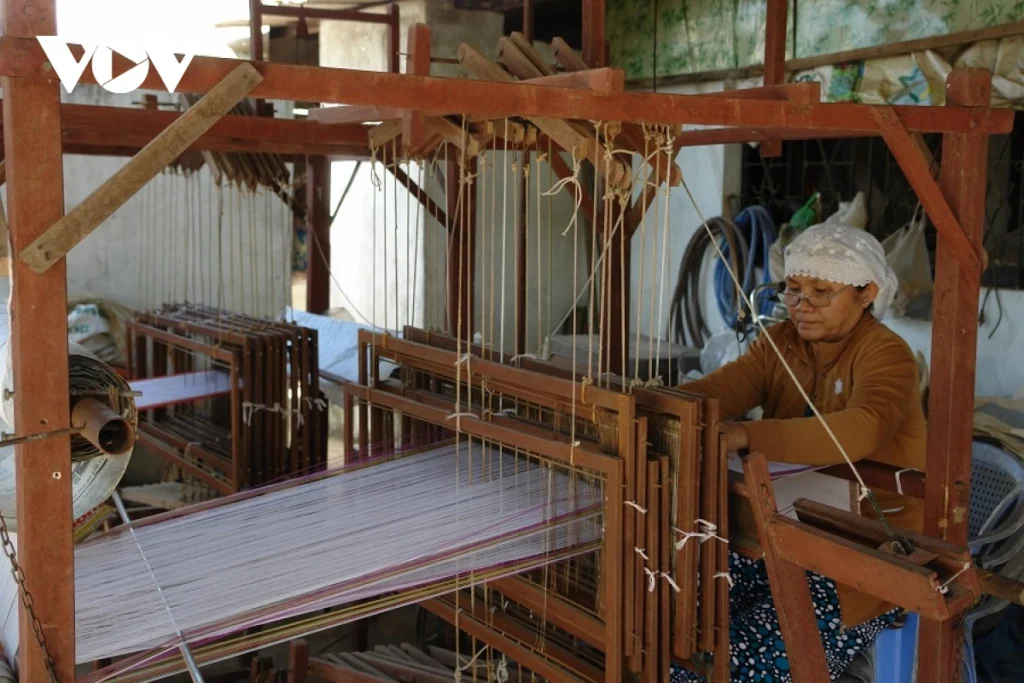
Vietnam Traditional Crafts as Journeys of the Heart
To explore Vietnam traditional crafts is to walk into living museums guided not by curators, but by warm-hearted artisans. These crafts don’t just decorate—they connect. They offer us stories carved in wood, dyed in silk, molded in clay, and whispered through incense smoke.
For any traveler eager to go beyond the surface, traditional craft villages offer a slow, soulful, and rewarding journey through the authentic spirit of Vietnam. Don’t just visit Vietnam—weave yourself into its heritage, one craft at a time.
Contact VietnamTour now to find the most suitable trip for you.
See more post: Vietnam Luxury Travel: Indulgent Journeys in the Heart of Southeast Asia

